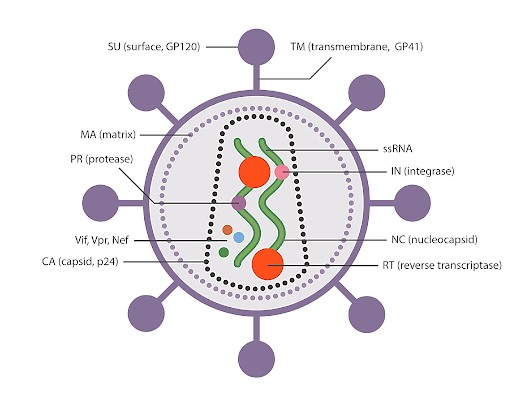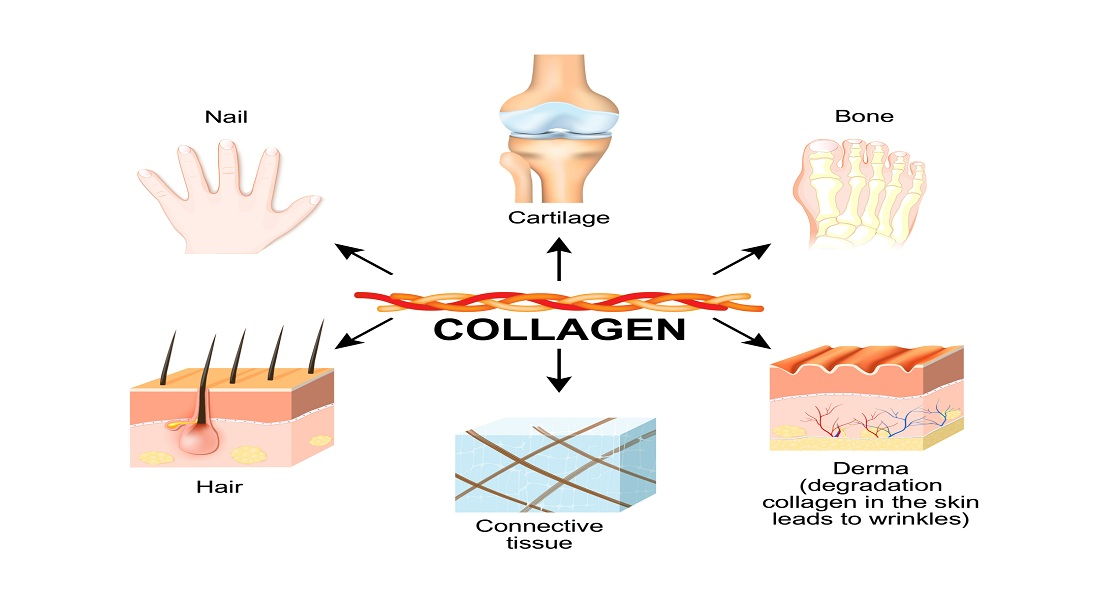
mRNA Science
mRNA or messenger RNA is the single-stranded RNA template that is translated by ribosomes for protein synthesis. Jacob and Monad coined the term "messenger RNA." It is a long polymeric strand made up of nucleotides covalently attached by phosphodiester bonds. It contains four nitrogenous bases, adenine, uracil, cytosine and guanine. The RNA and one of the DNA strands are complementary, but in DNA, uracil replaces thymine.
The mature mRNA is made up of the following regions: the 5′ cap, the 5′ UTR, the coding region, the 3′ UTR, and the poly(A) tail.
Coding Region: It is a string of codons, i.e., a triplet of nucleotides. Every single codon code for a specific amino acid, which is translated into amino acids in polypeptide chains by ribosomes. The start codon for the coding region is "AUG," and ends with any of the stop codons, i.e., UAA, UAG, or UGA. Part of the coding sequence may have a regulatory function.
Untranslated Regions, or UTRs, are found in the 5’ and 3’ regions before and after the coding region, respectively. Untranslated regions are present before the start codon and after the stop codon. They participate in gene expression. They also play a vital role in mRNA localization, translation, and RNA stability.
5’ Cap- methyl guanosine triphosphate cap is present at 5’ end.
Poly(A) Tail-A polyadenylate tail can be found at the 3' end.
In the majority of eukaryotes, a coding region of an mRNA is referred to as monocistronic when it codes for one protein. In prokaryotes, most mRNAs code for more than one protein; this is called polycistronic. These proteins mostly have related functions and are regulated by a single regulatory region with promoter and operator regions. In humans, the mitochondrial genome is polycistronic.
Synthesis of mRNA – Transcription and Processing
Transcription is a processes of mRNA synthesis from DNA.
In prokaryotes, all types of RNA are transcribed by a single DNA-dependent RNA polymerase. Here, no mRNA processing is required; therefore, transcription and translation can be coupled as both processes take place in the cytosol.
In eukaryotes, RNA polymerase II transcribes pre-mRNA. Pre-mRNA, or the main transcript, is then further converted into mRNA in the nucleus. It is called hnRNA, or heterogeneous nuclear RNA. The mature mRNA is then transferred to the cytosol for post-translational processing.
Transcription
The synthesis of RNA from DNA is called transcription. Using DNA as a template, the DNA-dependent RNA polymerase synthesises RNA in the 5' to 3' direction. The DNA strand with 5' to 3' polarity is known as the "coding strand," while the DNA strand with 3' to 5' polarity serves as a "template strand. The nucleotide sequence of the transcribed RNA matches the coding strand.
A transcription unit in DNA consists of three main regions and all the references are made with respect to the coding strand:
Promoter-present towards 5’-end of the structural gene.
Structural gene-present between promoter and terminator.
Terminator-present towards 3’-end of the structural gene.
The three steps of transcription are as follows:
- Initiation: RNA polymerase starts the transcription via binding to the promoter region, which further initiates DNA double helix unwinding.
- Extension: RNA polymerase adds complementary nucleoside triphosphates as substrates to the strand, and elongation continues with the wide opening of the DNA double helix. RNA transcription occurs in the 5’ to 3’ direction.
- Termination: transcription stops and mRNA detaches from RNA polymerase.
Processing
HnRNA, the newly generated mRNA or initial transcript, must be processed in order to become mature mRNA. HnRNA undergoes post-transcriptional processing for the generation of mature mRNA. Functional mRNA is further transported from the nucleus. Translation or protein synthesis occurs in the cytoplasm.
Exons and introns are both present in the hnRNA. Post-transcriptional modifications include splicing, capping, and tailing.
- Splicing: This process involves the excision of introns from mature mRNA strands.
- Capping: Here a cap of nucleotide, i.e., methylguanosine triphosphate, is added at the 5′ end of hnRNA.
- Tailing: This process deals with the addition of 200–300 adenylate residues at the 3’-end. The poly(A) tail protects RNA from exonuclease degradation and is also involved in transcription termination, mRNA transport, and translation.
The nuclear pore complex transports the fully functional mRNA to the cytoplasm after hnRNA processing, where it is translated into a polypeptide chain.
Categories of mRNAs:
Reporter gene mRNAs: These mRNAs resemble fully processed, capped, and polyadenylated mRNAs and are ready for translation by the ribosome. Most reporter mRNAs are available unmodified or modified with 5-methoxyuridine to reduce innate immune responses. Ideal controls to study transfection efficiency.
Genome editing mRNAs: Genome editing, also known as gene editing, refers to a range of scientific techniques that enable the modification of an organism's DNA. At specific sites in the genome, these technologies help in the addition, removal, or modification of genetic material. Several approaches for genome editing have already been developed. CRISPR-Cas9, which stands for clustered regularly interspaced short palindromic repeats and CRISPR-associated protein 9, is a well-known example. CRISPR-Cas9 is a naturally occurring genome editing system that bacteria deploy as an immunological response.
Vaccine mRNAs: An mRNA vaccine uses a copy of a molecule called mRNA to illicit an immune response. The vaccine delivers antigen-encoding mRNA into immune cells, which use the designed mRNA as a blueprint to build foreign proteins that would normally be produced by a pathogen (like a virus) or by cancer cells. These protein molecules activate an adaptive immune response, which instructs the body to recognise and eliminate the relevant pathogens or cancer cells. The mRNA is administered by a nano-formulation of the mRNA encapsulated in lipid nanocarriers, which protect RNA strands and facilitate their absorption into the cells.
Gene Replacement mRNAs: The application of mRNA for gene replacement is quite popular. Many proteins, including those that are membrane-bound, intracellular, or have undergone post-translational modification or processing, cannot be replaced by exogenous protein delivery. The number of indications that may be treated by protein replacement is greatly expanded by intracellular mRNA expression. The secreted human erythropoietin (EPO) protein can be easily detected in serum using an enzyme-linked immunosorbent test. Hematocrit assays can be used to determine how much EPO stimulates the production of red blood cells.
Fluorescent mRNAs: Cy5 GFP mRNA: Cy5 GFP mRNA has been designed to produce a high expression level of Green Fluorescent Protein. It can be used to control transfection efficiency. When labelled with Cy5, F-Luc mRNA can be easily traced to analyse mRNA delivery and translation efficiency.
Programmed to Self-Destruct
MRNA serves as the cell's intermediary messenger and is a crucial safety mechanism. Any RNA that is outside of the cell is immediately targeted for destruction by enzymes known as RNases, preventing invaders from using the cellular machinery to make foreign proteins. These enzymes destroy the information after identifying the structure and the U in the RNA coding, shielding the cell from erroneous instructions. By switching the blueprints "on" or "off" as necessary, the mRNA also provides the cell with a method to regulate the rate of protein synthesis. The instructions for messenger RNA are timed to expire. The U in the code, the single-stranded form, the ribose sugar, and the unique sequence of the mRNA all contribute to its short half-life. All of these characteristics work together to allow the information to be "read," translated into proteins, and then promptly destroyed within minutes for some proteins that require strict supervision, or up to a few hours for others. Once the instructions vanish, protein production stops until the protein factories receive a new message.
Functions and Applications
The primary role of mRNA is to act as a template for protein production. Ribosomes located either free in the cytoplasm or attached to the rough endoplasmic reticulum may carry out translation (RER).
The genetic information present in the RNA is translated into amino acids present in the polypeptide chain. The order of amino acids in a polypeptide chain is determined by the nucleotide or codon sequence in the mRNA. Each triplet codon, or three-nucleotide sequence, only codes for one particular amino acid. More than one codon can be used to code for an amino acid. Codons do not overlap.
mRNA directs a cell to synthesise a protein. The administration of a modified mRNA sequence can be used to cure diseases and can also be used as a vaccine. Pfizer-BioNTech and the Moderna vaccine are two examples of mRNA vaccines that have been approved for restricted use and are being developed to combat COVID-19 infection.
BTL Biotechno Labs Pvt. Ltd. with its Principal company, OZ Biosciences, offers a wide range of mRNAs that mimic fully processed mature mRNAs. These mRNAs are optimised for stability and performance by using a 5' cap-1 structure and a 3' poly(A) tail to stabilise them. They are modified with 5-methoxyuridine (5moU replaces U) or N1-methyl-pseudouridine (N1-mψ) to reduce innate immune responses. We also offer unmodified mRNAs.
Following are the Categories of ready-to-use mRNAs:
- Reporter gene mRNAs: ideal controls to study transfection efficiency
- Genome editing mRNAs: Cas9 mRNA for CRISPR Genome editing
- Vaccine mRNAs: ideal as controls for immunization or vaccine studies
- Gene Replacement mRNAs: EPO mRNA
- Fluorescent mRNAs: Cy5 GFP mRNA, Cy5 GFP mRNA
We supply custom mRNAs at microgram to multigram scales, from a few hundred up to several thousand bases, with a wide variety of modifications including 5’ terminal modifications with cap, internal modification such as 5-methoxyuridine (other modified nucleotides are available) and 3’ modification such as poly-A tail. fluorescent labeling with Cy5, Cy3 or other options is available.
For more details press the below link:
https://biotechnolabs.com/products
https://ozbiosciences.com/259-mrnas
For product details, please connect with us at info@biotechnolabs.com.








